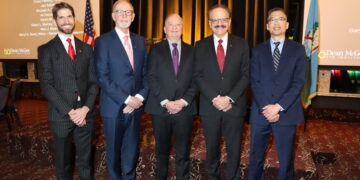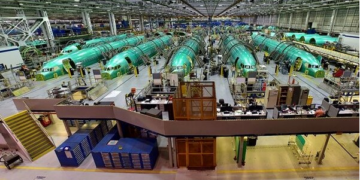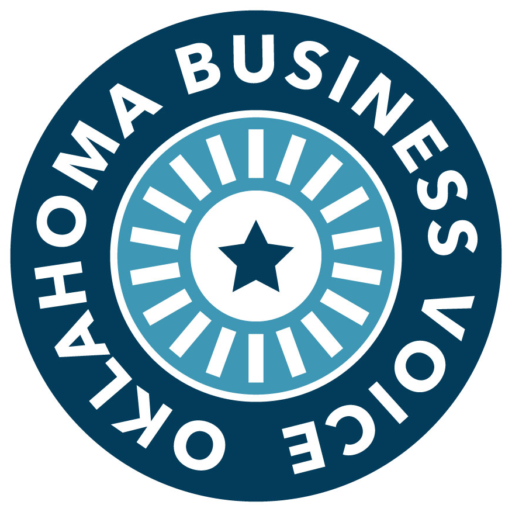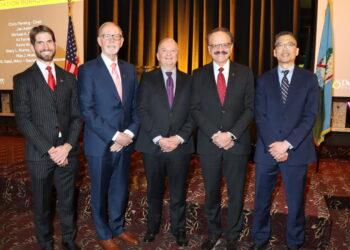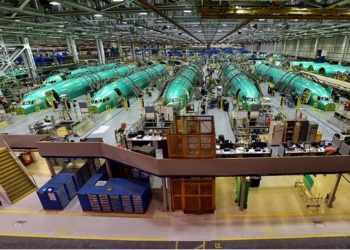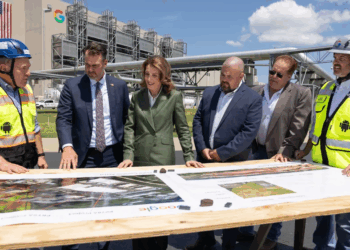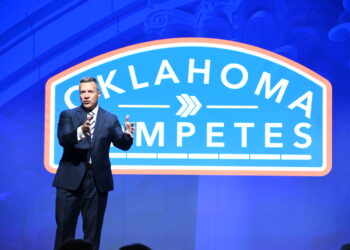This editorial was written by Mark Funke, CEO of the Oklahoma Business Roundtable
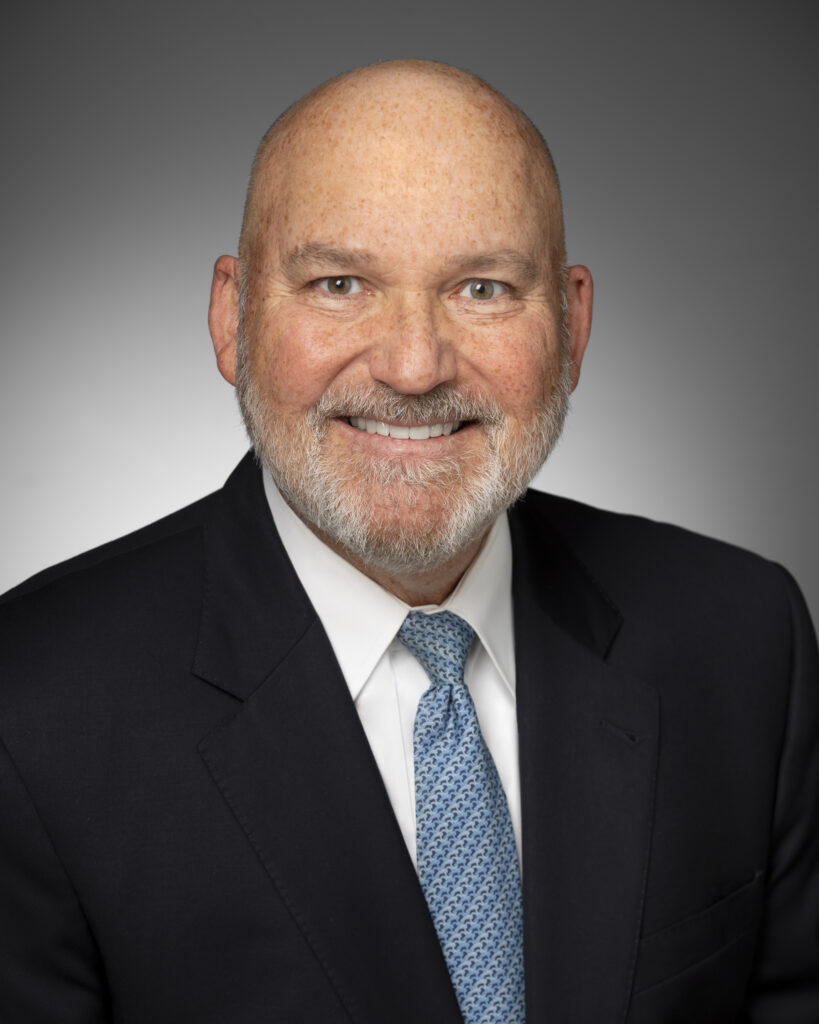
In 1991, Oklahoma stood at an inflection point. The state had energy, land, grit, and ambition, but lacked the resources and flexibility to compete on the global stage of economic development. Then-Governor David Walters understood that if Oklahoma was to attract investment and create jobs, it could not rely solely on state coffers or legislative appropriations. Structural budget constraints and constitutional barriers made traditional state-led economic recruitment very difficult.
So, Walters did something bold: he called on the private sector. Seven business leaders answered, laying the foundation for what has become the Oklahoma Business Roundtable (OBRT).
More than three decades later, the Roundtable has grown into a coalition of over 150 member companies, all united around the mission of advancing Oklahoma’s economy through private-sector leadership. Today, OBRT is a non-partisan, 501(c)(6) nonprofit governed by a 15-member independent board and audited annually by a national accounting firm. Its members—large and small—pay the same dues, and unlike many business associations, it does not lobby. Instead, it invests directly in economic development initiatives that government alone cannot fund.
A Quiet Force Behind Major Wins
From the beginning, OBRT has been about action. Member dollars fund the activities that make Oklahoma competitive in the fight for jobs and industry. That means supporting state officials as they host CEOs, arranging site visits, and underwriting trade missions abroad. It means fronting deposits and contracts so that Oklahoma has a strong presence at national and international trade shows where key relationships are formed.
These efforts often operate behind the scenes, but their impact is unmistakable. In recent years, Oklahoma has celebrated major announcements—plants, expansions, and investments that bring jobs and economic vitality. While he headlines often spotlight governors, state officials, or chambers of commerce, our members believe that economic development investments improves the state regardless of where in the state they happen. That activity increases the tax base, adds to employment and trading and construction activities. OBRT’s role as an enabler is undeniable. Quite simply, many of these wins would not have been possible without the Roundtable’s private-sector support.
Oklahoma has plenty to offer prospective investors: abundant and affordable energy, large tracts of developable land, one of the nation’s largest industrial parks, and a unique inland port system providing direct access to the Gulf of America and global trade routes. Add in shovel-ready sites, strong local chambers, and Select Oklahoma—a statewide network of professional economic developers—and the state has built a competitive edge.
Pair that with a State Chamber focused on pro-business legislation and policies and the lowest cost of living in the nation, and the appeal becomes clear.
Oklahoma is also enjoying moments of national recognition. An NBA championship has brought the state into the global sports spotlight. The 2028 Olympics are coming. Energy companies headquartered here are recognized world leaders. Aerospace and defense firms see Oklahoma as a critical hub. Medical researchers are advancing groundbreaking work in cancer, diabetes, lupus, Alzheimer’s and other critical areas.
By many measures, the state is ascending. But the question remains: can Oklahoma sustain this momentum?
The Two Pillars of Long-Term Prosperity
The future of Oklahoma’s economy rests on two pillars: education and healthcare.
Education: Workforce of Tomorrow
Ask any company evaluating expansion or considering a move to a new state, and the first question is always the same: Will I have the workforce I need—not just today, but in ten to twenty years?
Right now, Oklahoma’s answer is concerning. National benchmarks place the state at or near the bottom in educational outcomes, particularly in early literacy. Third- and fourth-grade reading proficiency—a key predictor of lifelong success—is unacceptably low.
It’s not for lack of effort from teachers, who remain deeply committed. Nor is it purely a facilities issue—most schools have adequate infrastructure. But systemic problems persist. Funding levels and teacher pay lag behind national averages. The state’s sheer number of school districts diverts dollars into administrative overhead instead of classrooms. Curriculum battles, political disputes, and inconsistent standards create uncertainty. Add to this the challenges of limited parental engagement and insufficient access to affordable childcare, and the picture becomes even more complex.
There are bright spots. Aerospace academies are creating pathways to high-demand careers. The new Workforce Commission is aligning education with employer needs. But these are early steps. Without a comprehensive strategy to improve outcomes, Oklahoma risks losing the very talent pipeline that fuels economic growth.
Healthcare: A Workforce That Can Work
The second pillar is healthcare. A smart workforce is useless if it isn’t healthy enough to show up. Here, too, Oklahoma struggles. Despite world-class transplant teams, leading-edge research institutions, and skilled doctors and nurses, the state consistently ranks near the bottom in health outcomes.
The reasons are complex: poverty, obesity, chronic diseases, limited access to care in rural areas, high uninsured rates, and policy battles that delay or dilute solutions. CEOs weighing investment decisions notice these metrics. They want not only a trained workforce but a healthy one—employees who can reliably work, innovate, and contribute.
Healthcare and education together form the backbone of workforce quality. Without progress on both, Oklahoma risks becoming a state with the infrastructure to attract business but without the people to sustain it.
A Call to Confront Hard Truths
The Oklahoma Business Roundtable has proven that the private sector can be a powerful partner in economic development. But sustaining the state’s trajectory requires confronting deeper structural challenges.
The good news is that conversations are beginning. The Oklahoma State Chamber and its Foundation have stepped up to amplify the urgency around education and healthcare. These issues demand honest dialogue—free of finger-pointing and partisanship—and long-term commitment.
Change will not come quickly. It will not be easy. But it is possible if the state’s business leaders, policymakers, educators, and citizens align around a shared vision. This is not just a problem for policymakers or a handful of advocates—it is an all-hands challenge that touches every Oklahoman.
What Comes Next
The path forward requires more than talk. It requires participation. Business leaders and citizens alike must join discussion tours led by the State Chamber, engage with local chambers, attend school board meetings, and ask hard questions of healthcare providers and policymakers. Solutions must be forged collectively, grounded in both accountability and innovation.
The stakes could not be higher. Oklahoma’s children and grandchildren deserve the chance to grow, learn, and thrive here. Our businesses deserve a workforce that is both skilled and healthy. Our communities deserve the prosperity that comes with sustained, inclusive growth.
The Oklahoma Business Roundtable was founded on the belief that the private sector could help propel the state’s economy forward. That belief has proven true. But now, advancing Oklahoma means something more: tackling the foundational challenges of education and healthcare head-on.
Oklahoma has momentum. The question is whether we will build the pillars necessary to keep it going.
The time for action is now.


